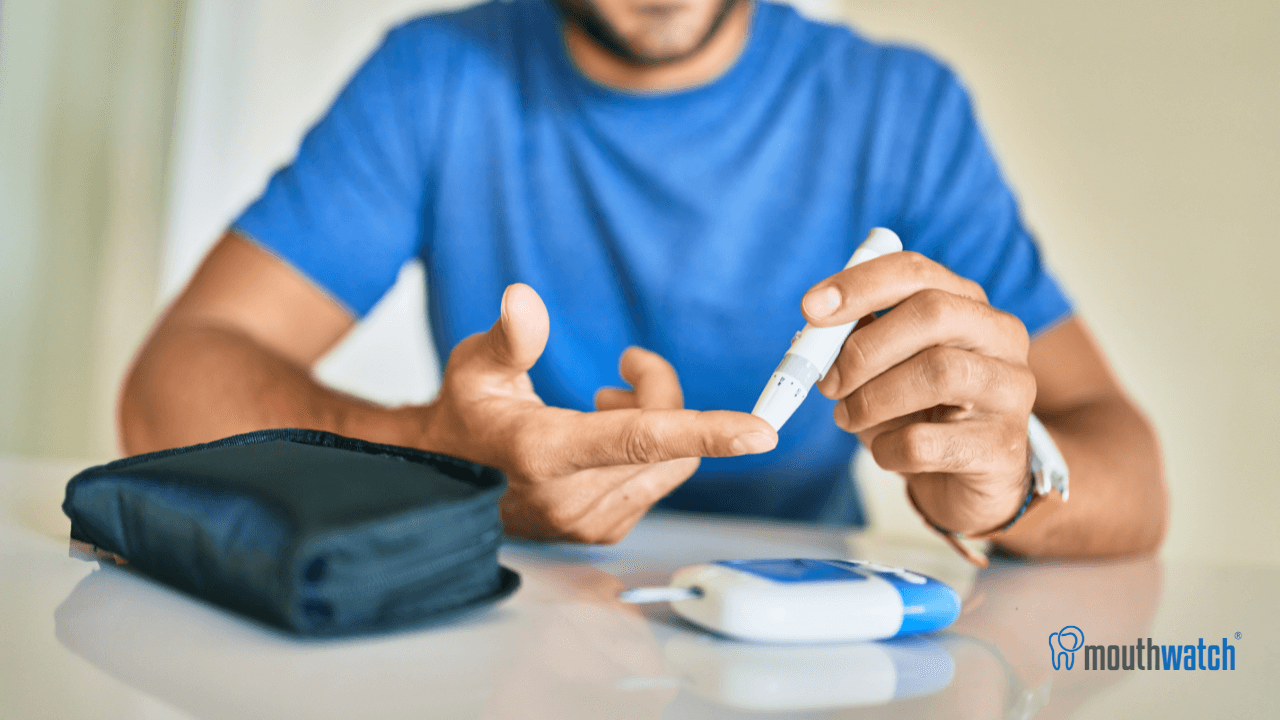
November is Diabetes Awareness Month
Diabetes affects the body’s ability to break down sugar, resulting in high blood sugar levels. This can cause a multitude of health problems affecting the kidneys, heart, and eyes. It greatly increases the risk of cardiovascular events. The link between diabetes and oral conditions has been strongly documented and we know glucose control is important to overall health. Diabetes causes changes to the blood vessels throughout the body including the oral cavity, putting an individual at a higher risk of caries, periodontal disease, and infections. This reduced blood flow and increased sugar levels from poorly managed or uncontrolled diabetes promotes the growth of bacteria in the mouth, leading to a higher rate of oral disease.
Stages of Diagnosis
Periodontal disease occurs in three stages, depending on the level of inflammation and destruction present. The first, gingivitis, presents as swollen and tender gums that may also be red in color, showing irritation. In this stage, the gums are more likely to bleed when brushing or flossing and is a precursor to periodontal disease. The subsequent stages of disease range from mild to advanced and can be slow and chronic or aggressive, leading to loss of function and teeth.
A Two-Way Street
While periodontitis can be caused by other factors, aside from diabetes, the connection remains. Research has shown that gum disease can increase blood glucose levels of individuals whether or not they have diabetes. According to the American Dental Association, when compared to those with healthy gum tissue, people with advanced gum disease are at a higher risk for having “higher long-term blood sugar levels”, developing gestational diabetes while pregnant, and may “have a harder time controlling their type 2 diabetes”. Diabetes has proven to have a bi-directional relationship: when blood glucose and Hba1c levels are chronically high (poorly controlled or uncontrolled diabetes) then periodontal disease is more aggressive and harder to treat; likewise, when periodontal disease is untreated then diabetic patients have a harder time controlling their blood glucose. Generally speaking, when an individual is able to treat and maintain one disease, the other is easier to manage.
See the Difference
Intraoral cameras are a great tool for monitoring a variety of oral conditions. Being able to demonstrate images that clearly show progression or before-and-afters of your patients health and risk factors helps them to understand the impact of their oral health. They may not understand when you describe “periodontal disease or gingival recession” but with an image, it will help the patient understand your recommendations as a result of the clinical finding to help ensure optimal oral and systemic health. Using a true HD intraoral camera, like the MouthWatch Plus+, has the added benefit of true-to-life anatomical color. This feature can help to more definitively capture the redness and inflammation noted in the oral cavity.
Overall Health Includes Oral Health
For those with diabetes, their primary care physician and endocrinologist should be ensuring that whole body health includes treatment and monitoring of their vision and oral health. Practicing good oral care can help to maintain diabetes control and lower your risk of associated problems. Monitoring and controlling your blood sugar levels and maintaining a healthy mouth is essential to good overall health.
Connected care is a step in ensuring overall health and wellness for high risk patients. Teledentistry is a great way to bridge the gap between oral and systemic health. The collaboration between medical and dental professionals has been merging as the benefits of overall wellness are realized. Using a HIPAA-compliant teledentistry platform like TeleDent by MouthWatch can allow a dentist to easily and securely share patient data and collaborate with other doctors or specialists.
Medical-dental integration puts patients at the center of care. Referrals are made easier with teledentistry and introductions can happen before the patient ever leaves the chair. Patient documentation living in one secure space, creating more accessibility for sharing and coordination providers. Having everyone on the same page benefits the patient and saves time and effort for the providers.
Some studies are noting improved patient compliance when virtual care is part of the overall care plan. For example, providers can meet with their patients for a check-up to see how conditions are developing, before determining whether or not an in-person visit is necessary.
Diabetes continues to be a growing concern in the population, and with a focus on overall health to prevent and manage disease the impact of dental providers as part of the care team for lifelong healthy smiles.
